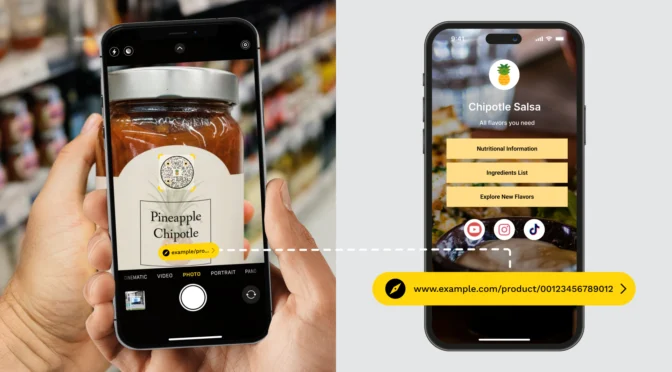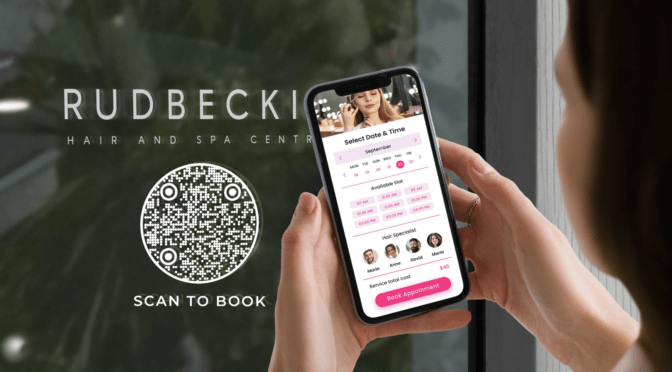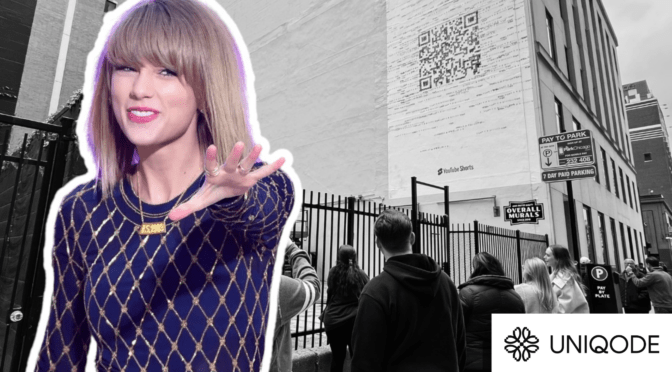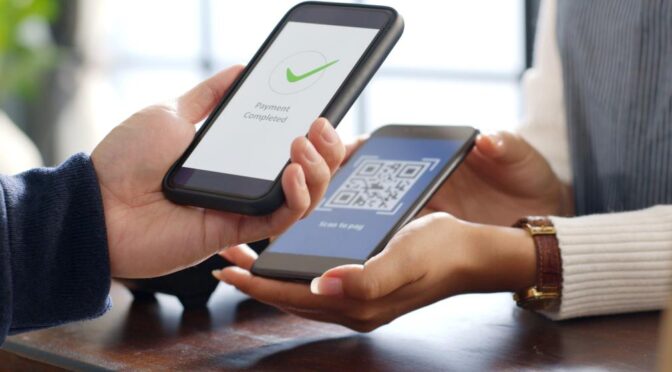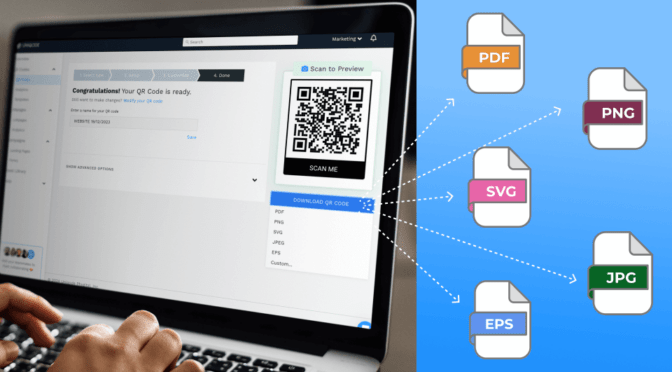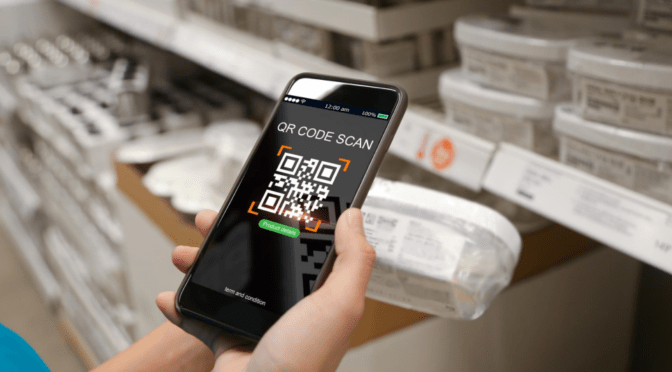For many, QR Codes have always been the traditional white and black image, prompting a scan to access content.
But as an option to share content, QR Codes are just one of the several tools that exist out there. Globally, there are several alternatives to QR Codes.
But can these alternatives replace all the benefits that QR Codes offer?
For brands and users alike, the features of QR Codes have made them withstand the rise and fall of other technologies.
With alternatives around, are QR Codes the best choice for your use case? Or is an alternative better?
In this article, we’ll answer that question, compare the alternatives with QR Codes, and by the end, you’ll be able to gauge if QR Codes are your best bet.
Read on to find out!
Table of contents
- What is a QR Code alternative?
- How the alternatives stack up against QR Codes: a feature comparison
- Here’s why you’re better off NOT searching for a QR Code alternative
- Frequently asked questions
What is a QR Code alternative?
A QR Code alternative refers to technologies or methods that offer alternative ways to encode and share information. They have different features and capabilities compared to QR Codes.
However, their positives lie in their specific features and how they may cater to a particular use case.
On the other hand, their drawbacks are that they are not as versatile and do not offer all the features that QR Codes provide.
What are some QR Code alternatives?
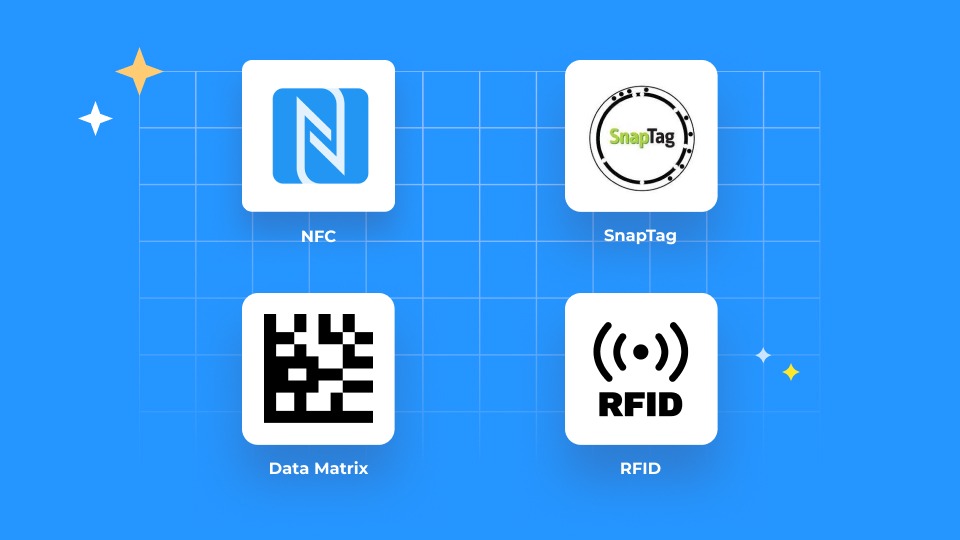
If you want to use QR Code alternatives for your next use case, here are the most popular choices to consider:
- Near-field communication (NFC)
- SnapTags
- Data Matrix
- Radiofrequency identification (RFID)
1. Near-field Communication (NFC)
As the name suggests, near-field communication is a short-range, wireless communication technology. NFC enables data exchange between two devices when they are near each other.
Like opening the camera app and scanning a QR Code, NFC technology requires a smart device to be tapped against an NFC tag or card. All modern Android devices and iPhones with iOS 13 are compatible with NFC.
Where is NFC used?
NFC is widely used for contactless data exchange between mobile devices , smartwatches, and even contactless payments. They are widely integrated into smart wearables for health monitoring and payments.
2. SnapTags
Invented by SpyderLynk, SnapTags are a form of 2D mobile barcode. These QR Code alternatives are depicted as a ring-shaped code surrounding an icon or company logo.
Like QR Codes, SnapTags require users to scan using their mobile device. The user has to snap a picture of the code and then text the photo to a short code indicated on the SnapTag. Users can also download a SnapTag reader to directly scan the tag.
Where is SnapTag used?
The use of SnapTags has declined significantly in recent years, with their usage being popular in Magazines, around the time it was launched.
3. Data Matrix
Of the alternatives available, a data matrix is the most visually similar to QR Codes. It is a 2D barcode that encodes data in a square or rectangular pattern of black and white cells.
It can hold alphanumeric data, numbers, and special characters.
Where is data matrix used?
Data matrix is popular in inventory management, product labeling, shipping, and logistics.
4. Radiofrequency identification (RFID)
This technology uses radio waves to identify and track information using radio tags and readers. The tag is identified by transmitting its unique identifier to the RFID tag reader.
Where is RFID used?
RFID is used in inventory management, anti-theft systems, healthcare patient tracking, access control in contactless entry systems, etc.
How the alternatives stack up against QR Codes: A feature comparison
Be it QR Codes or an alternative, it’s best to be aware of the features a tool offers. This way, it can be easier to match it with the requirements of your use case.
This feature comparison can help you navigate what the alternatives offer and how they stack up against QR Code features:
1. NFC vs. QR Codes

| Feature | QR Codes | NFC |
| Cost-effective | Inexpensive; You can print on a variety of surfaces | Needs specific infrastructure and technology, which adds to the cost |
| Operational efficiency | Doesn’t need a power source. Only needs a mobile device camera to complete action | Needs a power source to operate, which is the NFC device’s battery. A low battery can affect NFC performance |
| Scanning distance | You can scan from a minimum radius of 25cm | You can scan from a minimum radius of four cm, but you cannot scan from afar |
| Use cases | QR Codes are versatile as they can store a variety of information, including URLs, contact information, plain text, etc. | NFCs are typically employed for specialized tasks such as payments or authentication |
| User-friendly | QR Codes don’t require specialized software or equipment. You can easily scan using the mobile device camera | NFC can complicate user experiences by requiring users to have an NFC-enabled device and, in some situations, particular apps or settings |
2. SnapTags vs. QR Codes

| Feature | QR Codes | Snaptags |
| Cost-effective | Inexpensive; You can print on a variety of surfaces | The unique design and logo incorporation adds to the cost |
| Accessibility | Only need a mobile device camera to access content | Users need to complete additional steps to read the content of the SnapTag or install specific reader apps |
| Functions | Redirects the user to content and provides analytics on its performance | Only redirects the user to content with no additional analytics |
| Use cases | You can redirect QR Codes to websites, text, audio, video, etc. They are also more noticeable | SnapTags are mostly used to redirect to online content. They are also less noticeable due to their “ring around logo” design |
| Relevance | Latest, with many QR Code generators in the market | Outdated, with less scope and generators |
3. Data Matrix vs. QR Codes
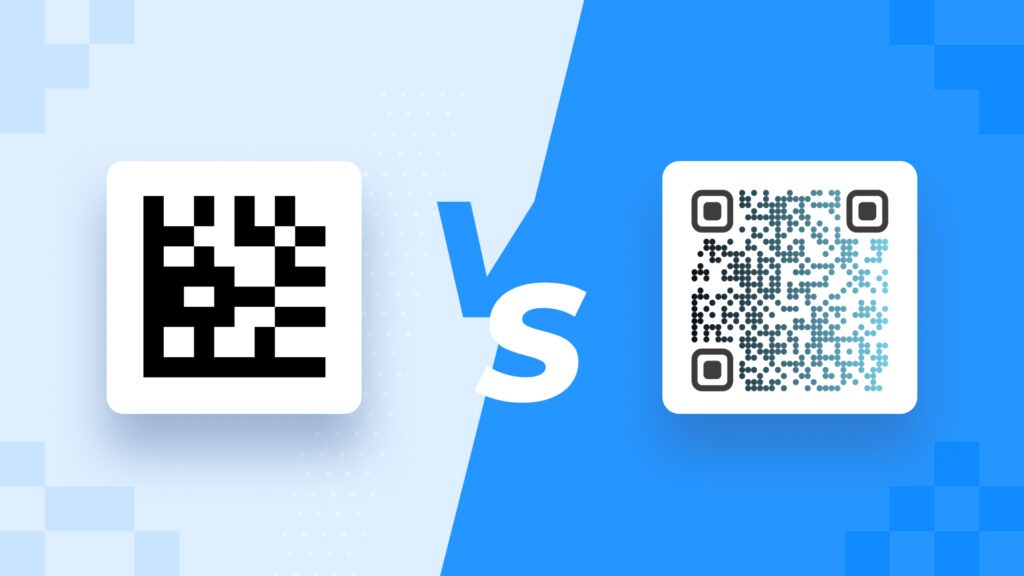
| Feature | QR Codes | Data Matrix |
| Cost-effective | Inexpensive; You can print on a variety of surfaces | Inexpensive, but mostly used in the form of stickers and labels only |
| Accessibility | Only need a mobile device camera to access content | Requires specific scanners to read content |
| Functions | Redirects the user to multimedia content and provides analytics on its performance | Only redirects the user to alphanumeric content with no analytics |
| Editability | QR Codes are editable and you can customize as per the branding | Non-editable and non-customizable |
4. RFID vs. QR Codes
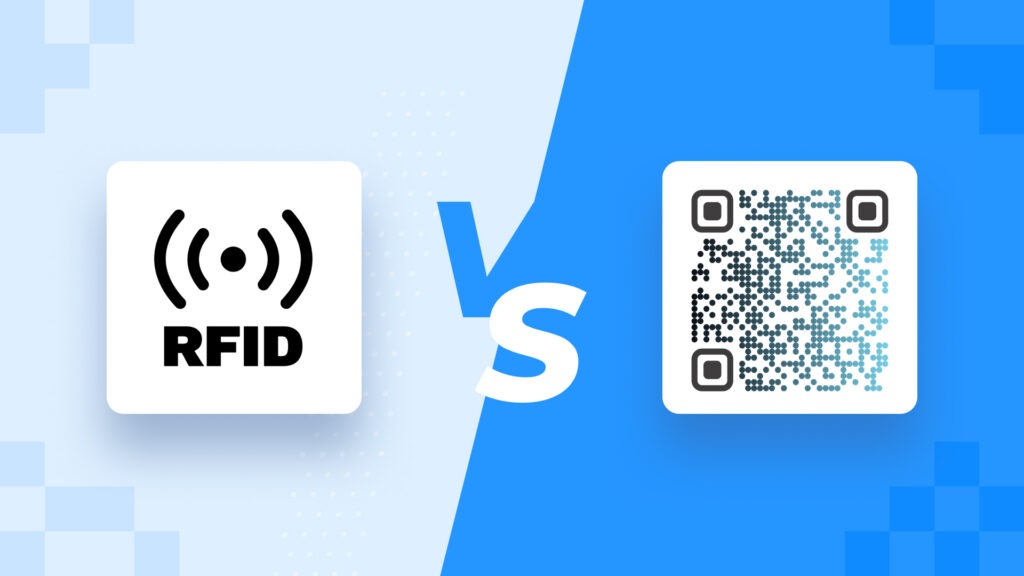
| Feature | QR Codes | RFID |
| Cost-effective | Inexpensive; You can print on a variety of surfaces | Requires readers and tags to have the system set up. Cost includes the system and devices used |
| Accessibility | Only needs a mobile device camera to access content | Requires specific devices and tags to read content |
| Data storage | Redirects the user to diverse types of content and has more data storage capacity | Uses an ID and database to retrieve data, limited data storage capacity |
| Interactivity | You can use QR Codes to trigger various actions such as visiting a website, making a phone call, SMS, etc. | There is limited interactivity as the tags are passive and used for identification and tracking |
Here’s why you’re better off NOT searching for a QR Code alternative
QR Code alternatives come with their own set of features. However, these features may either be beneficial or limiting in your use case.
But if your campaign or use case needs a specific feature from the list outlined below, then you may be better off using QR Codes than their alternatives.
1. No scope to obtain analytics
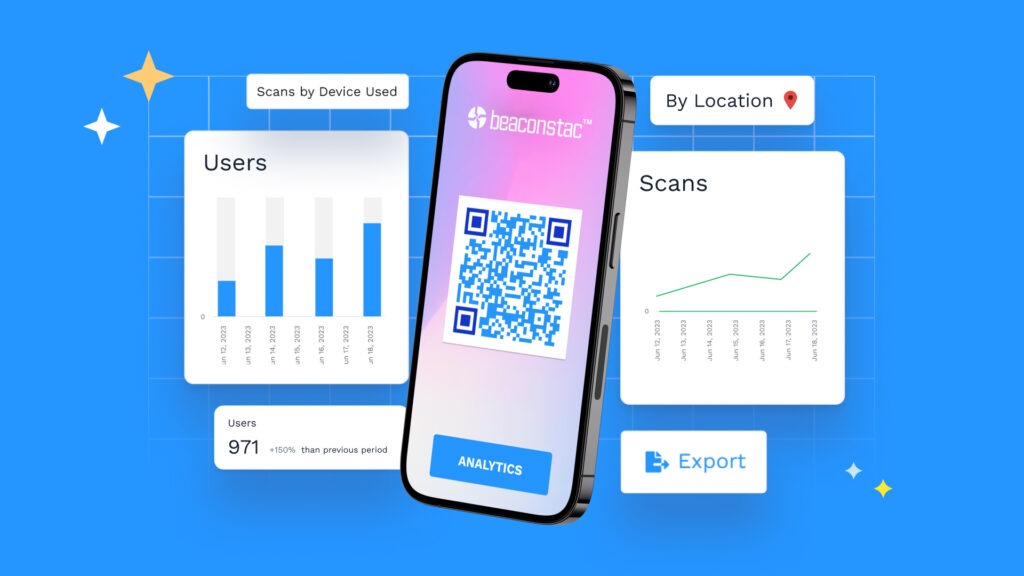
With alternatives such as RFID, Data Matrix, Snaptags, and NFC, there’s little to no scope to obtain any analytics on their performance.
If you’re using it for a campaign needing interaction data, switching to trackable QR Codes may serve your purpose better.
QR Codes provide extensive analytics on the user device, time, location, performance of the QR Code, etc. This gives you an overall view and helps you zero in on aspects that can improve your campaign.
Also read: How to track analytics with QR Codes
2. They do not ensure safety

QR Code alternatives do not carry the same amount of safety that QR Codes guarantee regarding the content shared and user interaction.
For instance, alternatives such as RFID, NFC, Data Matrix, or SnapTag do not provide any indication or guarantee regarding the safety of data transferred. It may also be impossible to recognize any tampering with the alternative or the content it encodes.
On the other hand, QR Codes have some features that indicate their safety and guarantee security with every scan. To know these features, you can read our guide on safe QR Codes and how to detect them.
🙃Good to know
As a QR Code provider, Uniqode is ISO 27001:2022 certified and SOC 2 Type 2, GDPR, and HIPAA compliant, making all interactions secure round the clock. Alongside enterprise-grade QR security, Uniqode also empowers teams with Single Sign On-login, Multi-Factor Authentication, and Uniqode Shield to protect the skewing of scan data.
3. They are not customizable
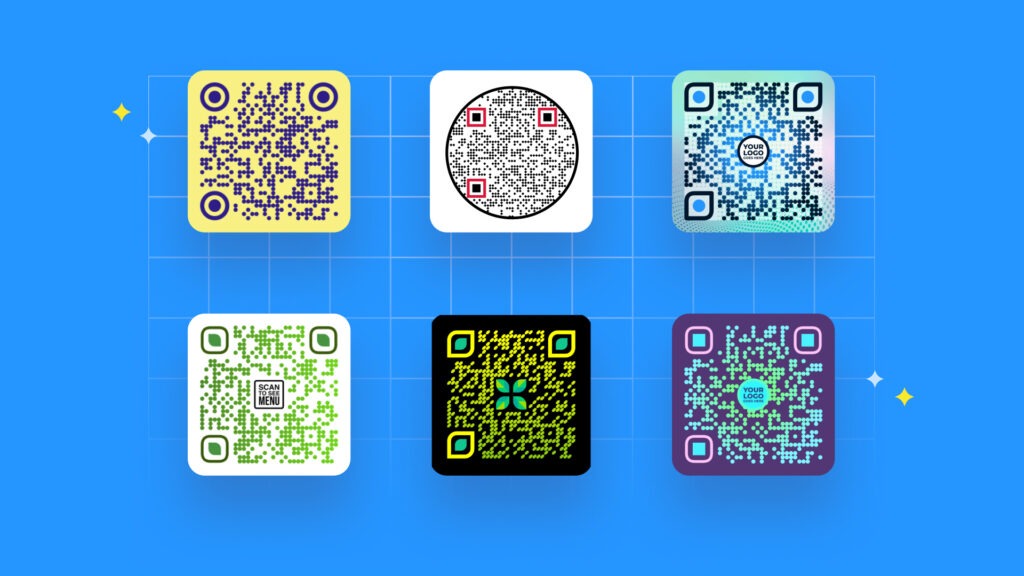
The visual aspect of your tool plays a key role in customer engagement. A plain data matrix, an RFID tag, a ring around the company logo, or a plain NFC card lack these visual elements that trigger brand recall.
QR Codes, on the other hand, have the potential to trigger brand recall owing to extensive customization.
You can customize QR Codes as per your brand aesthetic, add a logo, change the background and even add a frame that gives them a sense of what the QR Code leads to.
🙃Good to know You can make QR Codes a part of your overall branding by customizing every aspect of it. Using a QR Code generator like Uniqode, you can customize QR Codes with an image background or make a transparent one.
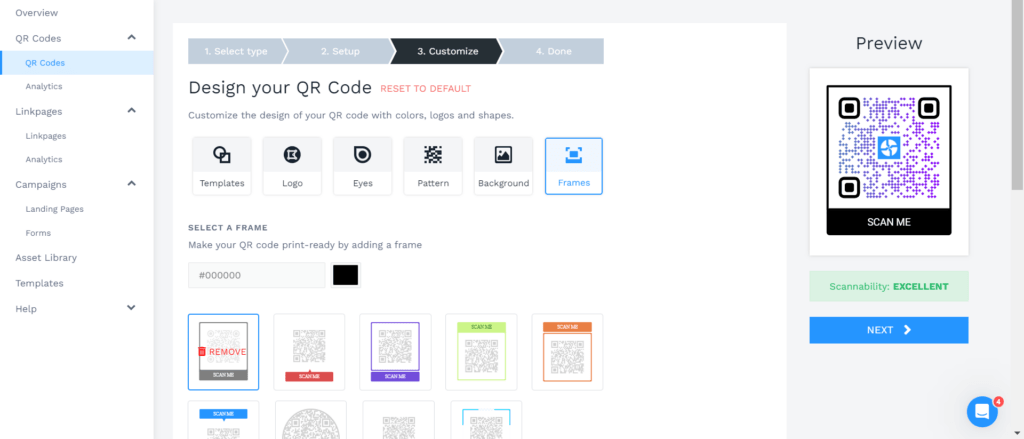 Add a logo, and frames, change QR patterns and eye shapes, and get the exact brand color using the hex editor.
Add a logo, and frames, change QR patterns and eye shapes, and get the exact brand color using the hex editor.
4. Not as versatile as QR Codes

The alternatives outlined are often restricted to specific actions, such as reading, retrieving data, or identification.
On the other hand, QR Codes can be versatile in function and trigger diverse actions, such as leading to a website, a coupon, sending an email, etc.
Also read: Explore different types of QR Codes
5. Ease of use

QR Codes have the upper hand with ease of use. All you need is the content you want your audience to access and a QR Code generator, and you can create one in minutes.
In terms of usage on the audience end, all they would need to do is scan the QR Code using their mobile device camera.
On the other hand, all the alternatives outlined require additional resources or steps that can make usage or accessibility harder.
Data matrix and RFID need reader devices, NFCs require compatible devices, and Snaptags have a rigorous process to get through before accessing the data.
Also read: How to scan a QR Code
Uniqode’s take on why QR Codes are here to stay
QR Code alternatives differ from QR Codes in several ways, yet are still in use due to their features that benefit specific industries.
Due to the diverse use cases and existing usage rates, QR Codes are only set to soar in usage in the future.
In fact, in the past year alone, the number of QR Codes created has increased by 238.06% from 2021. And by mid-2023, there’s been a 43.20% growth compared to the same period in 2022.
These statistics strongly indicate a growing interest in using this technology to connect with consumers effectively. This also indicates how, even in the presence of alternatives, the specific features and benefits that QR Codes provide remain unmatched.
Want to check the benefits of QR Codes yourself? You can do so by creating your first QR Code below 👇

Frequently asked questions
1. What can I use instead of a QR Code?
There are several alternatives to QR Codes, such as NFC, Data matrix, Snaptag, and RFID. However, these lack features compared to QR Codes and differ in functionality as well.
2. Are QR Codes good forever?
Dynamic QR Codes are good for long-term usage as they can be edited and do not expire. Static, free QR Codes, on the other hand, tend to expire if the content that they redirect to expires, if the QR Code is damaged or unscannable.
Ektha is a QR code expert with years of research and analysis into the evolution of QR codes. Having written over 70 in-depth articles on QR technology, she has developed a comprehensive understanding of how QR codes are transforming industries. Her insights, including The State of QR Report, have been featured in leading publications. With a passion for simplifying complex topics and providing actionable strategies, Ektha helps businesses leverage QR codes to enhance their ‘phygital’ connections.










